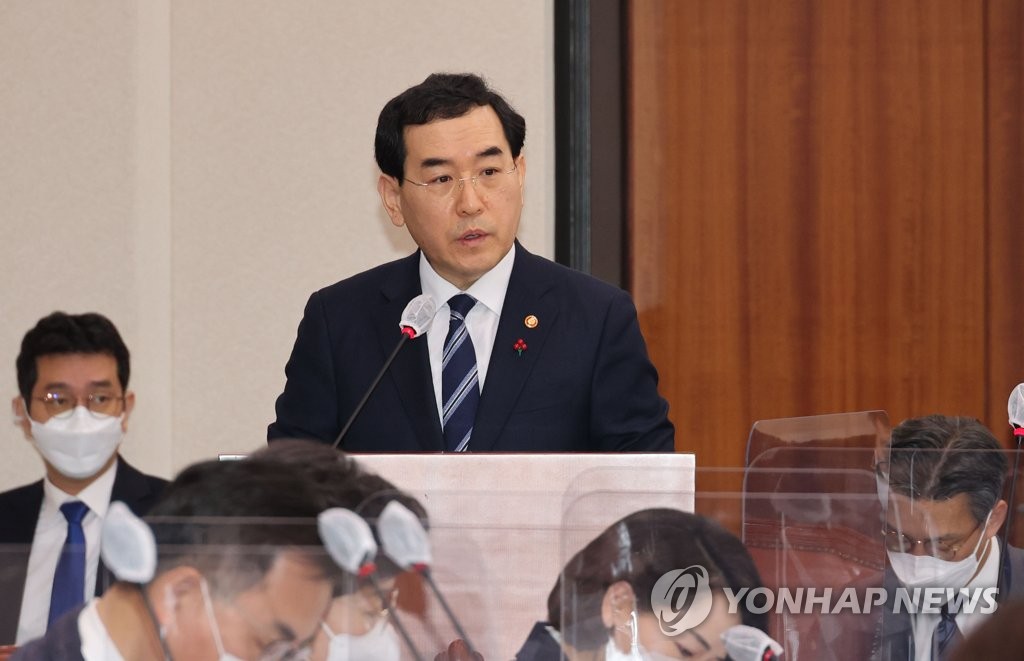 South Korea will increase the share of nuclear in total energy sources to 34.6% by 2036 from 23.4% in 2018, the Minister of Trade, Industry & Energy, Lee Chang-yang has said, announcing the final version of South Korea’s 10th basic plan for long-term electricity supply and demand to the National Assembly. Renewable sources will be responsible for 30.6%, up from 6.2% in 2018. South Korea will cut its reliance on coal-fired power generation to 14.4% from 41.9% as part of its plans to reduce its greenhouse gas emissions by 40% from the 2018 levels by 2030 and reach carbon neutrality by 2050.
South Korea will increase the share of nuclear in total energy sources to 34.6% by 2036 from 23.4% in 2018, the Minister of Trade, Industry & Energy, Lee Chang-yang has said, announcing the final version of South Korea’s 10th basic plan for long-term electricity supply and demand to the National Assembly. Renewable sources will be responsible for 30.6%, up from 6.2% in 2018. South Korea will cut its reliance on coal-fired power generation to 14.4% from 41.9% as part of its plans to reduce its greenhouse gas emissions by 40% from the 2018 levels by 2030 and reach carbon neutrality by 2050.
"South Korea will actively use renewable energy sources and nuclear power plants and come up with a feasible and balanced energy mix amid the country's efforts to reach carbon neutrality," the ministry said. President Yoon Suk Yeol has pledged to reverse the nuclear phase-out policy of the previous administration, which had sought to decrease the number of plants in operation to 17 by 2034. Currently, 20 of South Korea's 25 nuclear reactors are operational, and four others are under maintenance. Nuclear power currently generates about 30% of South Korea's electricity.
Some 28 ageing coal power plants are to be converted to liquefied natural gas (LNG) by 2036. However, South Korea will also reduce the proportion of power generation from LNG to 9.3% in 2036 from 26.8% in 2018, the ministry said. As to renewable energy, the ministry plans to add more wind generators by 2036 to reduce its dependence on solar power generators.
The Ministry said the 10th Basic Plan for Electricity Supply and Demand, the first draft of which was released in August 2022, was finalised by the Power Policy Council after going through various procedures, including a strategic environmental impact assessment, consultation with related ministries, a public hearing and a report to the National Assembly Standing Committee.
Suggestions made in a new energy policy announced in July 2022 have been "embodied” in the new plan. In July, the government said it aimed to maintain nuclear's share at a minimum of 30% by 2030. It also called for resumed construction of units 3&4 at the Shin Hanul NPP and sought to strengthen exports of new energy industries and "capitalise on them as growth engines". It sets the goal of exporting 10 NPPs by 2030, as well as the development of a Korean small modular reactor design.
The increased target for nuclear generation under the new plan reflects the start up of six new reactors by 2033 (Shin Hanul units 1-4 and Shin Kori units 5&6) as well as the continued operation of 12 existing reactors. Nuclear generating capacity is expected to increase from 24.7 GWe in 2022 to 28.9 GWe in 2030 and to 31.7 GWe in 2036.
Image: South Korea's minister of trade, industry and energy, Lee Chang-Yang (courtesy of Yonhap News)



